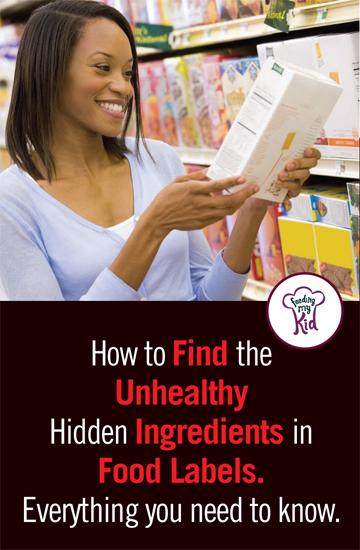 Food manufactures work hard to confuse us when it comes to ingredient and nutritional labels on food. This is a long article, but so important for all parents to read. We breakdown micro and macro nutrients, artificial colors, preservatives, fats, etc. No stone or calorie unturned in this article. Be sure to pass this article along to your parenting groups and friends. You may even want to print this out as a reference.
Food manufactures work hard to confuse us when it comes to ingredient and nutritional labels on food. This is a long article, but so important for all parents to read. We breakdown micro and macro nutrients, artificial colors, preservatives, fats, etc. No stone or calorie unturned in this article. Be sure to pass this article along to your parenting groups and friends. You may even want to print this out as a reference.
To quote Maya Angelou, “Do the best you can until you know better. Then when you know better, do better.” Feeding My Kid is here to help you know better.
That’s why we’re here! Food labels don’t have to be hard to read, which is why we have put together the basics you need in order to decipher the label—consider this a food label codex.
First up, calories!
Calories, How Many Should Your Child Have?
Unfortunately, food label percentages are based on how much an average adult should eat. It’s based on a 2,000 calorie diet. The percentages a child should have in fats, proteins or carbs are totally different—it varies person by person, case by case. Depending on your child’s sex, age and height the amount of calories and nutrients they need can vary greatly (1).
Girls and boys have different calorie requirements. Boy’s generally need a little more calories.
Here are the basics when it comes to calorie needs based on children and ages summed up by WebMD.
1 – 3 years-old (both sexes): 1,000 – 1,400 calories
Girls:
4 – 8: 1,200 – 1,800
9 – 13: 1,600 – 2,200
14 – 18: 1,800 – 2,400
Boys:
4 – 8: 1,400 – 2,000
9 – 13: 18,000 – 2,600
14 – 18: 2,200 – 3,200
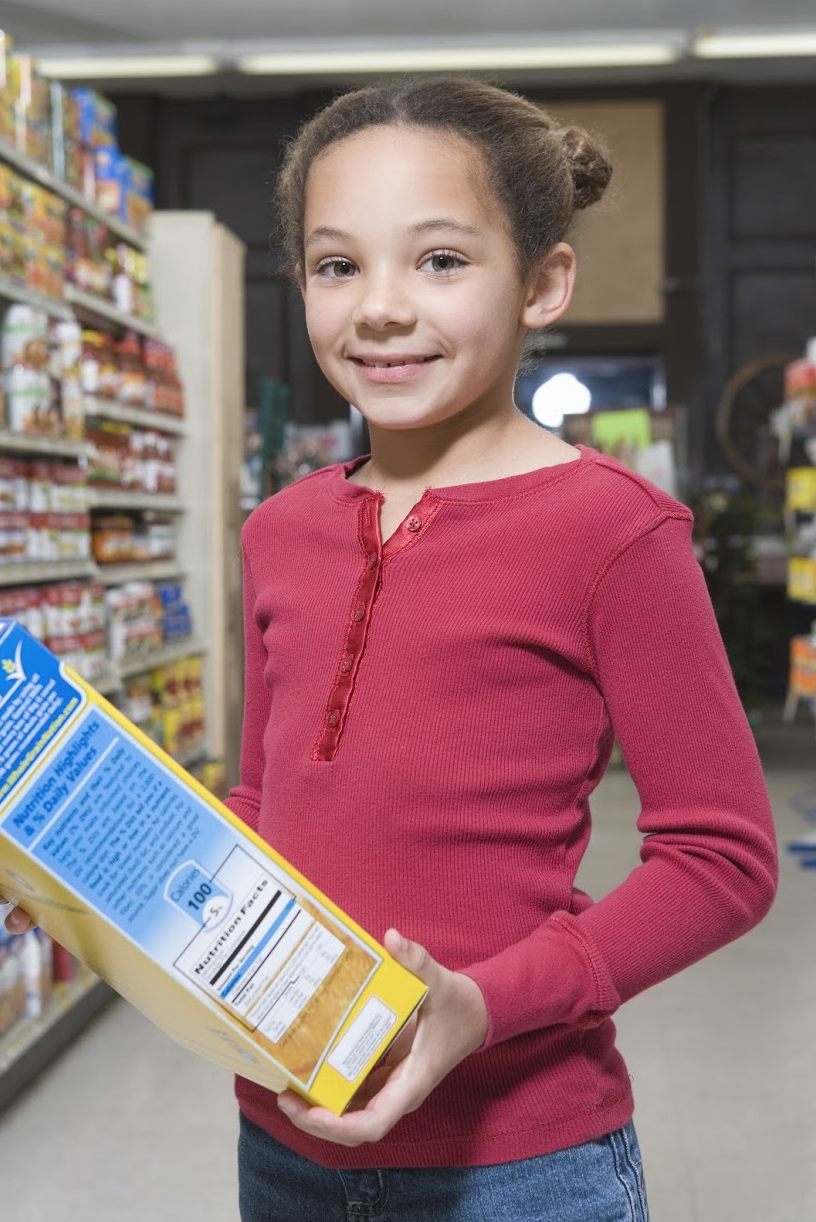 Of course, the higher numbers are the numbers that relate to how active your child is. These numbers are averages and depending on your child’s metabolic processes and the level of activity, they may be beyond these ranges or nicely nestled within (3).
Of course, the higher numbers are the numbers that relate to how active your child is. These numbers are averages and depending on your child’s metabolic processes and the level of activity, they may be beyond these ranges or nicely nestled within (3).
Not only does age factor into how many calories an individual should consume, but so does the amount of activity that the individual does. For instance, if you have two children that are the same age, but one child plays sports and the other does no physical activity, the child who is more active requires more calories and more food. A child burns an additional 100 to 150 calories during sports or physical activity (2).
So now that you know how many calories your child needs to have daily, you can start assessing the food label and just what these nutrients mean.
Calorie Count of Macronutrients
Some vital nutrients your body needs are called macronutrients. These macronutrients include fats, proteins and carbohydrates. Each nutrient has an average calorie per gram. Listed below are how many calories you will find in a single gram.
1 gram of Fat – 9 calories
1 gram of Protein – 4 calories
1 gram of Carbohydrates – 4 calories
As you can see, you can calculate how many calories are in something by already knowing how much fat, protein and carbs are in it (4). The healthier products will not be too high in fats. But remember, fats are still an important nutrient to eat.
Watch Out for Serving Sizes
Food manufactures can be very tricky with serving sizes. I’ve seen individual yogurts that say 3/4 of the yogurt is a serving size. I can easily finish off an entire yogurt. That means the calories, sugar and fat are based off a smaller serving size than you will probably eat. Look out for serving sizes on ice cream, candy bars and cereals, as they are normally much smaller than you will probably eat.
What to Look for When Reading the Labels:
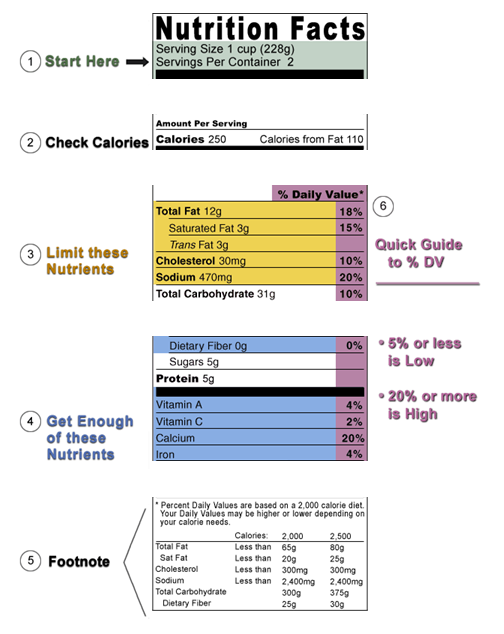
Some things to remember when looking at food labels. The top ingredients that are listed are the ingredients that are the most important. They are the ingredients that appear in the product the most (10).
Fat
Some fats are better than others for you, and some are good for you. Let’s break down which ones to avoid and which ones to eat more of.
Healthy fats (avocados, nuts, eggs, and fish) are essential for a child’s growth and development. These types of fats help children absorb vitamins and compliment cognitive skills. However, too much of any fat can be burdensome and lead to weight gain.
Now when reading a food label, you need to make sure that the product does not have too much saturated fat; and that it does not have any trans fats.
Trans fats should be avoided.
Trans Fat
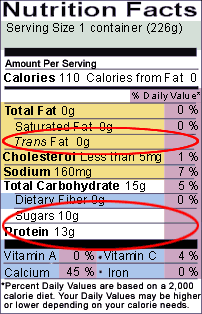
There are a number of foods that have trans fat in them (4). The reason that trans fat is so bad is it raises bad cholesterol in the blood stream and is a leading factor in the cause for heart disease (6).
Also, be aware that there is a loophole in manufacturing where if a product contains less than .5 percent of a nutrient per serving the nutrient doesn’t have to be listed on the label (5).
Therefore, there’s a possibility that there’s still trans fat in your child’s food. In fact, food companies understand these loopholes and use them frequently. Trans fats are cheaper and have a longer shelf-life than their counterparts. Great for manufacturers, awful for consumers.
Here’s the silver lining! There’s a way to read the ingredients in labels to find out for sure if the food has trans fats in it. There are certain ingredients that you’ll be able to recognize that always will have this form of bad fat.
If the food label has partially hydrogenated oil in it, it has trans fat. Foods that commonly contain partially hydrogenated oils are baked goods, fried foods, snacks and creamer and margarine (13).
Avoid any products that list one of these ingredients “partially hydrogenated,” “fractionated,” “shortening” or “hydrogenated”.
Some trans fats are mislabeled as “hydrogenated”, but “fully hydrogenated” oil is not considered trans fat.
Tip: The higher up the phrase “partially hydrogenated oil” is on the list of ingredients, the more trans fat the product contains.
In order to reduce trans fats, many leading food manufacturers have switched to palm oil. Palm oil may have no trans fats in it, but it does have saturated fat in it (6). Saturated fat is another fat you should try to have at a minimum. The American Heart Association recommends that you limit the amount of saturated fat you eat to less than 7 percent of your total caloric intake.
The foods are most likely to contain trans fats include: margarine, breads, baked goods, vegetable shortening, crackers, cookies, chips and salad dressings.
Protein
When it comes to protein there’s no real concern or need to count it, as it can be found in many of the foods kids eat daily; such as eggs, milk, fish, chicken, beans and nuts (7). Just be certain that the protein you and your kids are having isn’t high in sodium or preservatives. Check out our infographic: Is My Child Getting Enough Protein? It also includes foods with protein in them and you may be surprised by some of them. I was 😉
Carbohydrates
Carbohydrates can be tricky. If your child consumes too many carbs, these can spike insulin levels and also be converted into fat. You see, carbs are broken down into sugar, which is then used as energy. If you don’t use up all this energy, it will be converted into fat.
Kids need carbs! They need the energy to run and play.
The best types of carbs are whole grain or complex carbs; these carbs breakdown slower. Now, since the label does not tell if the carbs are simple or complex, it’s best to read the ingredients. If there’s whole grain, then these are the better carbs.
Examples of whole grains include whole-wheat flour, bulgur (cracked wheat), oatmeal, whole cornmeal, and brown rice.
Refined grains have been milled, a process that removes the bran and germ. This is done to give grains a finer texture and improve their shelf life, but it also removes dietary fiber, iron, and many B vitamins. Some examples of refined grain products are white flour, de-germed cornmeal, white bread, and white rice.
Sodium
Sodium is everywhere. It’s in nearly every food, used as a preservative and as a seasoner. Seventy-five percent of the sodium we consume doesn’t come from table salt (15). The recommended daily amount of sodium is 1,5000 milligrams for adults (15).
Fiber
It’s also good to make sure that there’s a lot of fiber in your diet; it not only makes you feel full, but it also keeps your insulin levels level.
Sugar
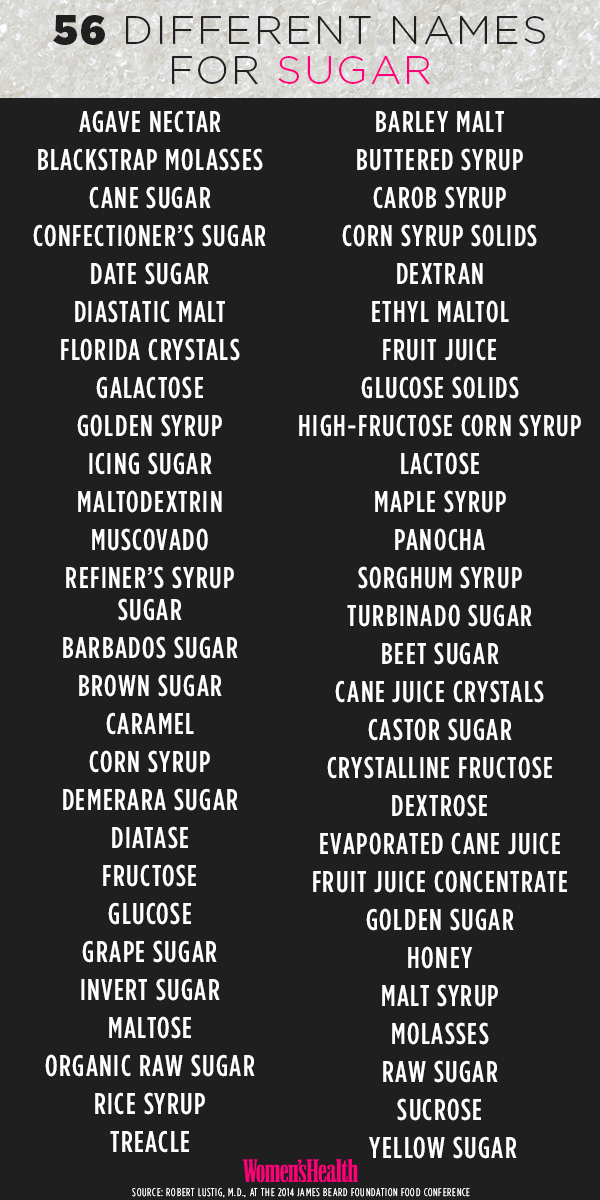 Sugar has many names. As you can see from this list from Women’s Health, there’s a list of 56 names to look for on your food label (9). If you see any of these names, you know there’s probably hidden sugar.
Sugar has many names. As you can see from this list from Women’s Health, there’s a list of 56 names to look for on your food label (9). If you see any of these names, you know there’s probably hidden sugar.
Sugar is a leading factor in weight gain among children and adults. Currently, 1 out of every 3 children are overweight or obese in the U.S. If you are concerned about your child’s weight, check out our article on how to get kids to safely lose weight.
Sugar can be troublesome. On the food label there is no daily percentage. Many speculate as to whether the food manufactures deliberately left this out so people don’t realize just how much sugar they are consuming.
The given ratio for how much sugar someone should have on a daily basis is 25 grams a day. A 12 ounce can of coke has 35 grams. Just one coke is already over the amount of sugar you should have in a day!
Another factor is added sugar. Many of our palates are used to the taste of sugar. We crave it. We want it. So the food industry has added sugar in everything. They try and reach the “Bliss Point” of food taste.
Food labels do not tell you if there’s added sugar in a product or not. It just lists sugar and in many different forms. There are so many ways food manufactures try to sneak in sugars.
One sneaky sugar is High Fructose Corn Syrup. High Fructose Corn Syrup is less costly to produce and mixes easily into foods (15). This sugar encourages over-eating and is a leading factor in the obesity epidemic (15).
So when reading a label, be sure to check the ingredients. Try and avoid the added sugars and hidden sugars. Natural sugars are ok!
MSG
Monosodium Glutamate, more commonly known as MSG, is a flavor enhancer. MSG has many concerning and potential health risks to it, especially if you happen to have MSG Symptom Complex; with this medical problem, you could suffer from headaches, shortness of breath and heart flutters as well as potential bone loss (10, 18). Foods have to have written on the label that they contain MSG, however many processed foods have trace amounts of MSG (11). Even though MSG has to be listed on the food label as a processing agent, in it’s different forms it doesn’t have to be listed (11).
Since MSG is comprised of glutmuic acid, found commonly in many proteins, here is a list of common ingredients that contain MSG and glutamic acid:
Amino acids, autolyzed yeast, citric acid, glutamate, glutamic acid, hydrolyzed protein, mono potassium glutamate, monosodium glutamate, protein, whey protein concentrate disodium inosinate, concentrate, carrageenan, maltodextrin, disodium guanylate and modified cornstarch (12, 18).
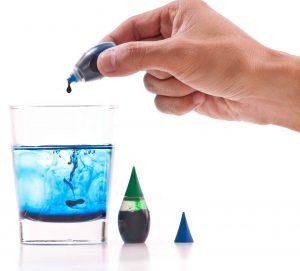 Food Coloring
Food Coloring
Food coloring is actually linked to causing mood changes in kids. A recent study suggests that food dyes, such as those found in everyday foods, like some mac & cheese products, cereals, candies, cookies, etc. can have a dramatic affect on a child’s cognitive abilities, causing loss of focus and hyperactivity (19, 20).
So think twice before you give your kids a bag of M&M’s! They may enjoy it at first; you won’t be enjoying the affects later.
Preservatives
Sodium Benzoate is a preservative found in many kinds of sodas and foods. In the very same study that found that food dyes were mood-changing, sodium benzoate was also linked as a culprit to causing kid’s to lose focus (21).
So avoid these preservatives: Sodium Nitrates, Sodium Nitrites, Sodium Benzoate, Potassium Benzoate and Butylated Hydroxyanisole (22). They’re not good!
Other Harmful Ingredients
Soybean oil, because it’s genetically modified; Propylene glycol alginate (E405), a food additive that also is used for car industries; Polysorbate 60, made of corn and palm oil; Enriched flour, devoid of nutrients and bleached; Artificial Sweeteners, Aspartame, Saccharin and Sucralose may be linked to cancer and promote over-eating (18, 22)
How To Read The Label
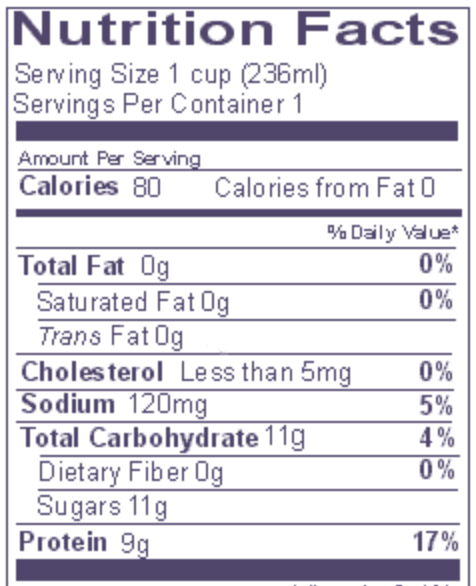
Now that we’ve covered the basics, let’s learn how to interpret them!
As you can see, food labels are based on a standard 2,000 calorie diet and they can be very confusing for you and your child to read. Food labels can still be very useful, as they are still revealing in what nutrients are in the products. If you pay close attention, you will soon see that some foods are best kept on the shelves because they are too high in fats and sugars and too low in nutrients.
So once you start looking at the labels at the supermarket, you will see that it’ll be easy to get your child on track to living a healthy, happy lifestyle.
The more you explain the importance of understanding our health, the more likely your child will be to develop health-conscious habits in the future!
Additional Resources and Information
-
Kids Health: Food Labels
-
Health: Help! Why Can’t I Lose Weight With Exercise?
-
WebMD: Estimated Calorie Requirements
-
Kids Health: Learning About Calories
-
Health: How To Read A Food Label
-
NPR: Palm Oil in the Food Supply: What You Should Know
-
Eating Well: Deceptive food labels: How to know what’s truly healthy
-
Health: How to Count Carbs in 10 Common Foods
-
Women’s Health: 56 Different Names of Sugar
-
WebMD: Reading the Ingredient Label: What To Look For
-
Life Spa: Sneaky Names For MSG: Check Your Labels
-
Truth In Labeling: Where is MSG
-
Mayo Clinic: Trans Fat is Double Trouble for Your Heart Health
-
FDA.Gov: How to Understand and Use the Nutrition Facts Label
-
Readers Digest: 4 Most Harmful Ingredients in Packaged Foods
-
Healthy Eating: How Much Sodium Does a Child Require?
-
WebMD: Soluble and Insoluble Fiber
-
Save Our Bones: 12 Dangerous And Hidden Food Ingredients In Seemingly Healthy Foods
-
Food Matters: Which Food Additives Make Children Behave Badly?
-
Feeding My Kid: Is Artificial Food Coloring Dangerous for Kids?
-
WebMD: The Truth About 7 Common Food Additives
-
Huffington Post: Processed Food: 10 Of The Worst Toxic Food Ingredients


